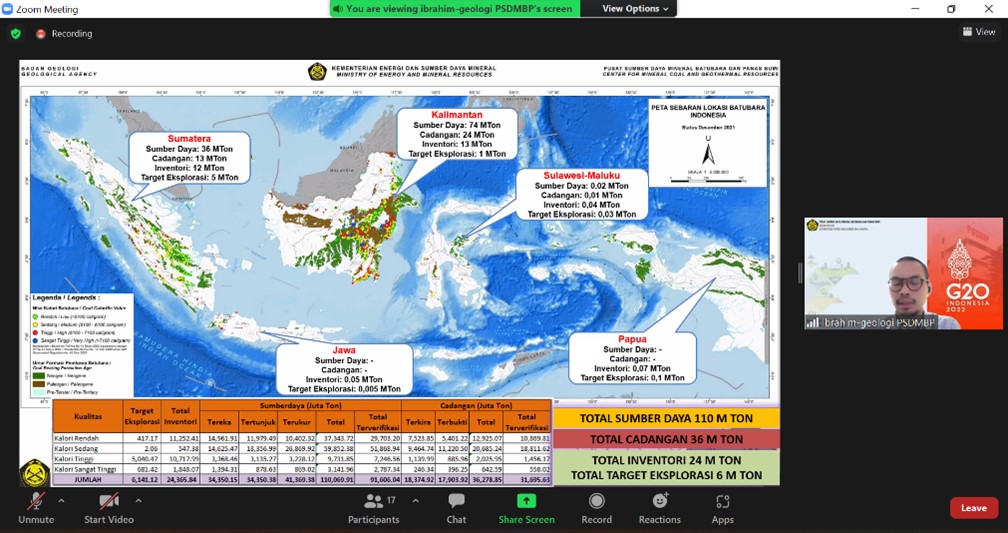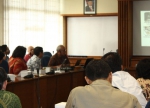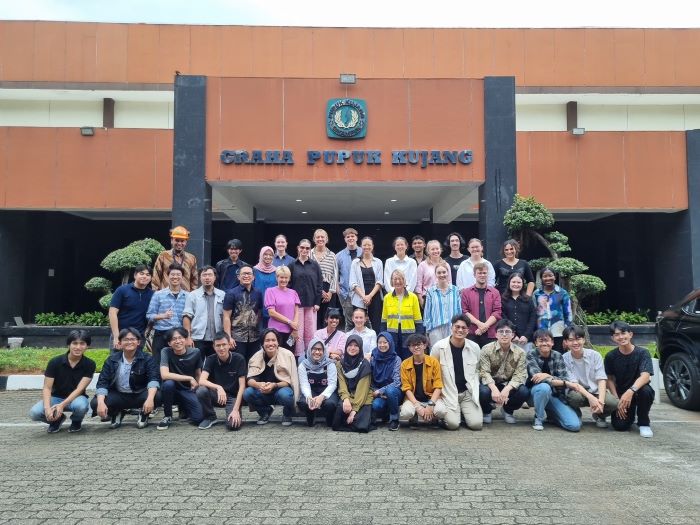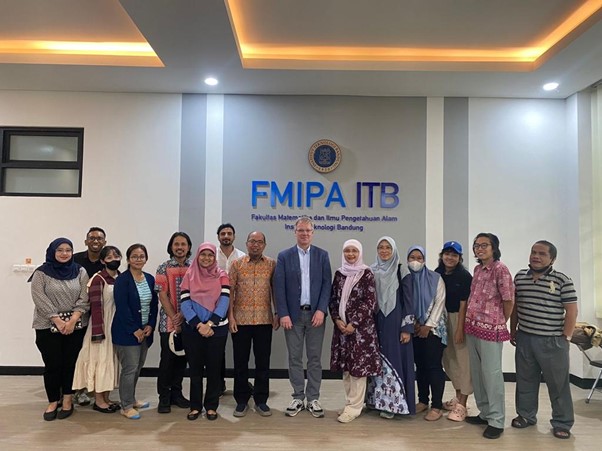Discussing the Other Side of Indonesian Coal in Palynology Guest Lecture

BANDUNG, itb.ac.id–Indonesia is known for its abundance of natural resources, one of which is coal. Although underrated, coal still holds high economic value. This was the topic of guest lecture GL0561 Palynology which was held virtually by the Sub-Coordinator of the Center for Mineral, Coal, and Geothermal Resources from the Ministry of Energy and Mineral Resources, M. Abdurachman Ibrahim, S.T., M.T., Monday (5/4/2022).
Coal Definition
The book definition of coal is a deposit that consists of both organic and non-organic materials formed as the accumulation of plant remains that have undergone compaction through physical and chemical processes by heat and pressure for geological time. The quality of coal can be determined by the depth of its burial, the deeper the coal was buried, the better the quality.
Coal Potential in Indonesia

Coal is known as a dirty energy source because of its high CO2 emissions. Even so, coal still brings numerous economic benefits to Indonesia. In his presentation, Ibrahim shows that Indonesia's coal reserve is only 3% of the world's total reserves. It is a very small number considering Indonesia is one of the largest coal exporters in the world.
According to the data from the Center for Mineral, Coal, and Geothermal Resources, Indonesia has around 110 million tons of coal resources, 36 million tons in reserves, 24 million tons in inventory, and with the exploration targets of 6M tons spread around the archipelago, such as in Sumatra, Borneo, Papua, and a few in Java and Sulawesi-Molucca.
Coal mining is still one of Indonesia's main industries in the non-oil-and-gas sector with the production capacity reaching more than 60 million tons each year. In fact, Indonesia's coal reserves are still sufficient for a long time, and in 2040 it is estimated to number around 24.8 billion tons.
However, this supply does not go in line with the demand, which is predicted to drop by 40% in 2050. This is caused by the increasingly strict environmental regulations, especially for newly constructed power plants, and the growing trend for renewable energy as the primary energy source. Therefore, the Center for Mineral, Coal, and Geothermal Resources has shifted its focus to the utilization of coal as a good-carbon source, that is as the raw material for producing chemicals or advanced carbon materials.
Indonesian Coal Utilization and Development Programs
Other efforts that the ministry has taken are the optimization of the existing coal power plants and implementing future-built power plants with Clean Coal Technology, Carbon Capture Utilization & Storage (CCUS). These technologies are necessary considering that 35% of CO2 emissions are coming from coal power plants. By utilizing the CCU/CCUS technology we are trying to reduce the amount of CO2 released into the atmosphere. Moreover, the government is working on a new regulation that will require coal power plants to implement environmentally friendly technologies such as CCT.
In addition to the utilization effort, coal can also be processed to yield higher-value products through programs such as coal gasification (yielding methanol and DME), coal liquefaction (yielding gasoline and solar), coal briquette (yielding carbonated briquette and biomasses), cokes making (yielding high-temperature coal often used in metallurgy processes), and extraction (yielding agroindustry materials such as humate acid and fulvic acid).
The presence of coal in Indonesia will only become futile if we can utilize and develop it correctly. Apart from its already massive coal reserve, Indonesia still has multiple greenfields or unexplored potential coal reserves.
Therefore, the role of the geoscientist is very crucial considering more than 50% of mining failure cases are caused by errors in data collecting procedure and geologic interpretation. Furthermore, with various collaborations in coal development and utilization programs, this resource is expected to retain its significance for years to come.
Reporter : Pravito Septadenova Dwi Ananta (Geological Engineering, 2019)
Translator: Favian Aldilla Rachmadi (Civil Engineering, 2019)

scan for download








